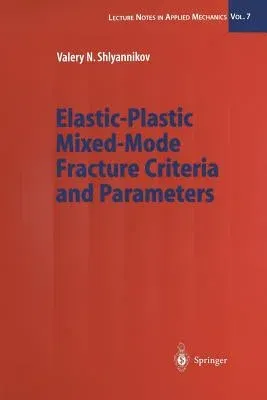Valery N Shlyannikov
(Author)Elastic-Plastic Mixed-Mode Fracture Criteria and Parameters (Softcover Reprint of the Original 1st 2003)Paperback - Softcover Reprint of the Original 1st 2003, 28 July 2012

Qty
1
Turbo
Ships in 2 - 3 days
In Stock
Free Delivery
Cash on Delivery
15 Days
Free Returns
Secure Checkout
Part of Series
Lecture Notes in Applied and Computational Mechanics
Print Length
246 pages
Language
English
Publisher
Springer
Date Published
28 Jul 2012
ISBN-10
364253659X
ISBN-13
9783642536595
Description
Product Details
Author:
Book Edition:
Softcover Reprint of the Original 1st 2003
Book Format:
Paperback
Country of Origin:
NL
Date Published:
28 July 2012
Dimensions:
23.39 x
15.6 x
1.37 cm
ISBN-10:
364253659X
ISBN-13:
9783642536595
Language:
English
Location:
Berlin, Heidelberg
Pages:
246
Publisher:
Weight:
362.87 gm

